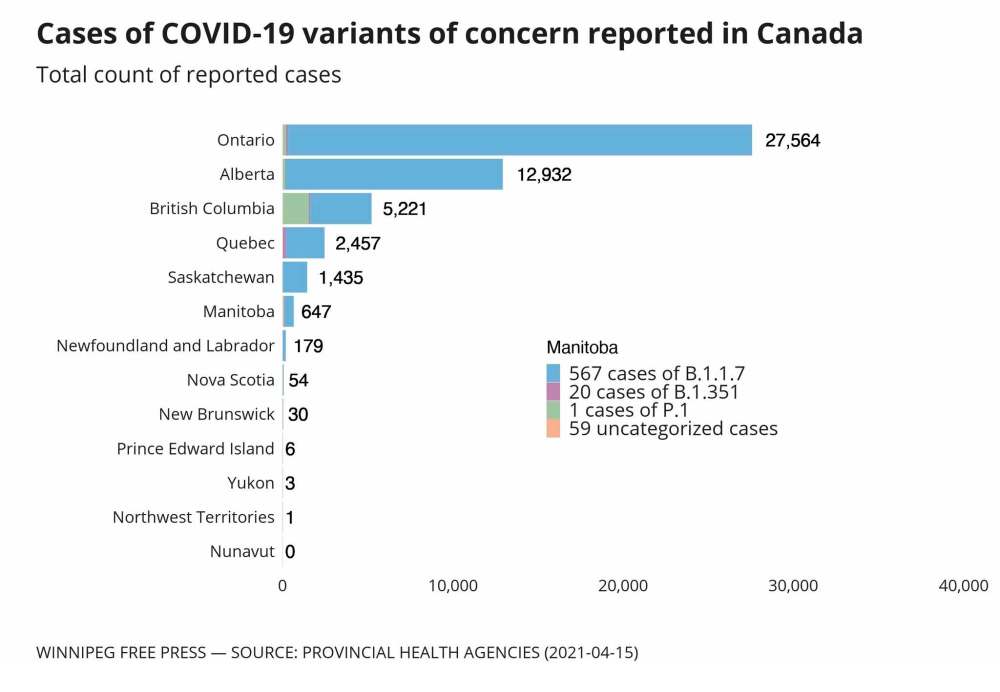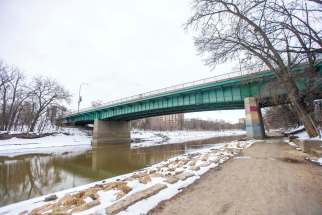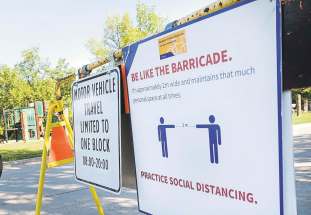Manitoba urged to tighten travel rules after Brazil COVID variant emerges
Read this article for free:
or
Already have an account? Log in here »
To continue reading, please subscribe:
Monthly Digital Subscription
$0 for the first 4 weeks*
- Enjoy unlimited reading on winnipegfreepress.com
- Read the E-Edition, our digital replica newspaper
- Access News Break, our award-winning app
- Play interactive puzzles
*No charge for 4 weeks then price increases to the regular rate of $19.00 plus GST every four weeks. Offer available to new and qualified returning subscribers only. Cancel any time.
Monthly Digital Subscription
$4.75/week*
- Enjoy unlimited reading on winnipegfreepress.com
- Read the E-Edition, our digital replica newspaper
- Access News Break, our award-winning app
- Play interactive puzzles
*Billed as $19 plus GST every four weeks. Cancel any time.
To continue reading, please subscribe:
Add Free Press access to your Brandon Sun subscription for only an additional
$1 for the first 4 weeks*
*Your next subscription payment will increase by $1.00 and you will be charged $16.99 plus GST for four weeks. After four weeks, your payment will increase to $23.99 plus GST every four weeks.
Read unlimited articles for free today:
or
Already have an account? Log in here »
Hey there, time traveller!
This article was published 15/04/2021 (1701 days ago), so information in it may no longer be current.
The highly infectious coronavirus variant wreaking havoc in Brazil, which is gaining momentum across Western Canada, has arrived in Manitoba, marking another worrisome milestone in the province’s battle against COVID-19.
The Manitoba government refused to provide details Thursday about the potential spread of the P1 novel coronavirus variant, which experts consider to be the most concerning of the mutations.
A Manitoban who lives in the Interlake-Eastern Health Region, who had travelled outside of the province and became sick with COVID-19, tested positive for the P1 variant. The province confirmed the first case on Thursday.
The Free Press sent a number of questions to public health officials to get information about the number of close contacts ordered into self-isolation, whether the traveller was exempt from quarantine rules, and if the travel was international or domestic.
The province did not release more information, nor was Dr. Brent Roussin, Manitoba’s chief public health officer, or other health officials made available.
“We don’t have any additional information to provide beyond what is listed on the dashboard and in the bulletin,” the province said in a written statement to the Free Press. “If a public health risk is assessed and it is deemed necessary to protect the health of others, further information is released.”
Dr. Nazeem Muhajarine, a University of Saskatchewan epidemiology professor, said the evolving research leans toward the P1 variant being from two to 2.5 times more infectious than the original strain that was first detected in Wuhan, China.

The P1 variant gained attention in the Brazilian city of Manaus, which had so many COVID-19 infections during the first wave that officials presumed the region had herd immunity. But P1 emerged, and by last December it seemed to have reinfected many people who had recovered from COVID-19 months earlier.
“This is highly transmissible and it could even be more virulent and more lethal, because of its ability to evade immunity,” Muhajarine said. “It’s probably the one that could most likely evade an immune response.”
Muhajarine said Manitoba officials have no option but to consider beefing up travel restrictions.
Currently, travellers are required to quarantine for two weeks after arriving from another province, unless they are exempt under the public health order. The policy could be modified by shortening the exemption list, ramping up enforcement or restricting travel within Manitoba.
“You need to take every care possible to keep yourself safe, and one way to do that is to stay where you are and not to travel,” said Muhajarine.
“P1 has to be brought from outside, it can only be imported, so travelling should really be restricted right now, especially with P1 detected now.”
So far in Manitoba, 647 COVID-19 cases have been caused by a variant of concern, including 567 caused by the B.1.1.7 variant (which was first detected in the U.K.). Eighty-seven previously reported cases were categorized as a variant of concern on Thursday.
Dr. Horacio Bach, an infectious disease expert at the University of British Columbia, said Manitobans should presume that even with one detected P1 case, there are probably 10 circulating.
“Once you get the P1 variant, it’s a matter of time that it will take over the rest of the variants,” Bach said.
In Canada, cases caused by the P1 variant have predominantly been recorded in British Columbia, which has been cited as the worst place for cases involving the variant outside of Brazil.
The number of cases caused by the variant exploded in B.C. last month, in part due to dozens of infections at the Whistler ski resort, despite none of those cases having travelled outside of Canada.
Last week, B.C. stopped sequencing COVID-19 cases for variants because of how many contained the B.1.1.7 (U.K) and P1 strains.
Recently, in Alberta, a large workplace-related cluster involving the P1 variant was also reported.
Bach and other experts are urging B.C. to beef up quarantine enforcement and close in-school learning, a move reserved for worst-case scenarios.

“At this stage, probably in one month, we’ll run out of space in the hospitals, and that’s the main problem when you have so many infections,” he said. “It’s coming back to the very beginning of the pandemic.”
The Manitoba government was unable to say how many COVID-19 patients in hospital Thursday had a variant of concern, but there have been no hospitalizations related to the P1 variant. As of Thursday morning, 137 COVID-19 patients were hospitalized in Manitoba; 35 of them in intensive care.
Bach said a P1 case could be so damaging that it might be worth issuing more public information on possible exposures and where the case is located and that more surveillance testing might avoid a wider outbreak.
“Once you get the P1 variant, it’s a matter of time that it will take over the rest of the variants.” — Dr. Horacio Bach, an infectious disease expert at the University of British Columbia
“The specific region might need to be surveyed for emergence of the P1 variant. If you find one match, you probably have 10,” he said.
On Thursday, Manitoba reported 153 new COVID-19 infections and one more death.
A woman in her 30s from the Interlake-Eastern region had died from COVID-19. The Manitoba First Nations COVID-19 Pandemic Response Co-ordination Team said the woman was Indigenous.
Of the 153 new cases announced Thursday, 73 were in the Winnipeg health region, 57 were in the Northern health region, 10 were in the Interlake–Eastern health region, seven were in Prairie Mountain and six were in the Southern health region.
Test positivity rates were 5.3 per cent provincewide and 5.1 per cent in Winnipeg.
An outbreak was declared at Winnipeg’s Parkview Place personal care home.
— with files from Katie May
dylan@freepress.mb.ca
danielle.dasilva@freepress.mb.ca

Our newsroom depends on a growing audience of readers to power our journalism. If you are not a paid reader, please consider becoming a subscriber.
Our newsroom depends on its audience of readers to power our journalism. Thank you for your support.
History
Updated on Thursday, April 15, 2021 6:48 PM CDT: Updates final
Updated on Friday, April 16, 2021 11:58 AM CDT: Tweaks lede.








